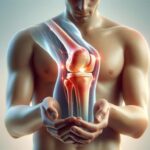Understanding the Root Causes of Knee Pain
Knee pain is a common condition that affects people of all ages, often interfering with daily activities and overall mobility. The knee joint is one of the most complex and heavily used joints in the body, making it prone to wear and tear. Common causes of knee discomfort include overuse injuries, osteoarthritis, ligament strains, and conditions such as bursitis or tendinitis. In some cases, poor posture or improper movement patterns during exercise or daily activities can also contribute to joint pain.
Other factors such as aging, repetitive stress, previous injuries, and excess body weight can exacerbate knee issues. Understanding the underlying cause is essential for choosing the right treatment approach. Consulting a qualified healthcare provider can help determine whether the pain is due to structural damage, inflammation, or muscular imbalances.
Proven Relief Methods for Knee Discomfort
Once the cause is identified, various methods can be used to relieve knee pain effectively. Some of the most commonly recommended strategies include:
- Applying ice or heat therapy to reduce inflammation and promote circulation
- Taking over-the-counter anti-inflammatory medications under professional guidance
- Using knee supports or braces for added stability
- Engaging in low-impact physical activities to maintain joint mobility
In addition to these options, topical treatments and gentle massage may offer short-term pain relief. Some individuals find relief through acupuncture, which stimulates specific points in the body to trigger natural healing responses. Always consult with a healthcare provider before beginning any new treatment plan, especially if symptoms persist or worsen.
Exercise and Movement for Long-Term Support
Exercise is a key component in managing and preventing knee joint problems. Strengthening the muscles around the knee, especially the quadriceps, hamstrings, and calves, helps support the joint and reduce strain. Incorporating flexibility and balance exercises can also improve joint function and minimize injury risk.
Some effective exercises include:
- Leg raises and hamstring curls
- Wall sits and step-ups
- Gentle yoga stretches and balance drills
It’s important to choose low-impact activities like swimming, cycling, or walking on even surfaces. Avoid high-impact sports or exercises that place excessive stress on the knees. Working with a physical therapist or certified trainer can ensure a safe, personalized approach to knee strengthening.
Lifestyle Adjustments to Prevent Knee Pain
Prevention plays a crucial role in maintaining knee health over time. Making simple lifestyle changes can significantly reduce the risk of developing chronic joint problems. Maintaining a healthy weight is one of the most effective ways to decrease pressure on the knees, as excess body weight adds strain with every step.
Additional preventative strategies include:
- Wearing supportive footwear that aligns with your gait
- Practicing proper posture and body mechanics during activities
- Incorporating regular stretching into your daily routine
- Staying hydrated and following a balanced, nutrient-rich diet
Monitoring and addressing early signs of discomfort can prevent minor issues from escalating. Being proactive about knee health can help you stay active and mobile for years to come.
When to Seek Professional Help
While many cases of knee discomfort can be managed at home, certain symptoms may indicate a more serious issue that requires medical attention. If the pain is severe, persistent, or accompanied by swelling, redness, or a locking sensation, professional evaluation is essential.
In some cases, imaging tests such as X-rays or MRIs may be needed to assess the extent of joint damage. Treatment options might include physical therapy, corticosteroid injections, or surgical interventions, depending on the diagnosis. Early intervention can improve outcomes and potentially delay or avoid more invasive procedures.
Whether you’re dealing with occasional soreness or chronic pain, understanding when to seek help can make a significant difference in your recovery process and long-term joint health.
Conclusion: Taking Charge of Your Knee Health
Knee pain can interfere with your ability to enjoy daily life, but many effective strategies exist to manage and prevent discomfort. By understanding the causes of knee joint issues and adopting a comprehensive approach that includes proper care, exercise, and lifestyle changes, you can take meaningful steps toward long-term relief. If symptoms persist, don’t hesitate to consult a healthcare professional for personalized guidance.








